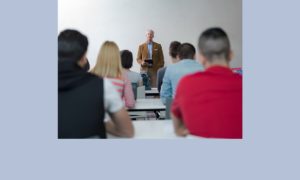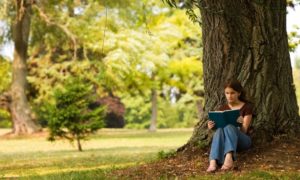 My 6-year-old is obsessed with baseball stadiums. All summer his attention was captured by stadium history, especially for our local team the St. Louis Cardinals. Every day this summer, he constructed stadiums from magnet tiles and blocks. Before bed, he gave me tours of his elaborate structures and explained the history and nuances of each. One day in July, my husband took our son to a Cardinals game. They went early, walked around and took a photo in front of a plaque featuring Busch Stadiums I, II and III. You should have seen his smile.
My 6-year-old is obsessed with baseball stadiums. All summer his attention was captured by stadium history, especially for our local team the St. Louis Cardinals. Every day this summer, he constructed stadiums from magnet tiles and blocks. Before bed, he gave me tours of his elaborate structures and explained the history and nuances of each. One day in July, my husband took our son to a Cardinals game. They went early, walked around and took a photo in front of a plaque featuring Busch Stadiums I, II and III. You should have seen his smile.
This childhood preoccupation has come with new questions. Who designs and builds stadiums? Could he do this when he gets older? Which part would he like the most — drawing the stadium? Constructing it? Maintaining it? Demolishing it? Stadium fandom has led to a broader baseball craze. We have most of our library’s baseball books. My son studies player statistics, remembering numbers and nicknames. He wants to be on a team and promises this will get him outdoors more.
In the past, I have written about youth readiness. I’m going to write about how my son, and other youth, learn and how systems can help or hurt the learning process. We will consider my organization Jobs for the Future’s framework on student-centered learning, formed from the best research on learning theory, brain science and instructional design.
This framework is rooted in the evidence that positive and productive learning is essential for young people to succeed. It includes four empirically backed principles for teaching and learning. While each is independently valuable, it’s the four principles acting in concert toward a larger goal of deeper learning that makes for an optimal learning experience.
Student-owned learning
It’s clear that my son loves creating and constructing stadiums. Usually when he completes one, he takes it down and starts again. I find that he works harder and stays more focused because the process belongs to him. He has a certain amount of pride, creative control and ownership. He has learned far more from doing than if I had instructed him myself. This ownership has led to real enthusiasm. He can’t wait to show me and tell me what he has learned.
Anytime, anywhere learning
My son’s curiosity about stadiums is not time-bound. As a colleague of mine says, our brains don’t turn on at 8 a.m. and off at 3 p.m. He learns about baseball and stadiums through conversation and video, by studying pictures and reading books. He asks questions at home and on the playground — and even of unsuspecting grocery store clerks. Learning happens whenever it happens. And it always counts.
Competency-based learning
This interest in baseball stadiums has made my son a better builder. He is getting more adept at using different types of materials to make more stable replicas. I can assess his building skills by how long a stadium stays up, how many toys fit inside and by seeing if his stadium matches the photos he shows me. Competency-based education is about moving a young person forward when ready. It requires giving a young person ways to show what he or she knows by assessing meaningful chunks of learning. For my son, I can observe, question and test, which lets me in on his increasing proficiency in knowledge and skills.
Personalized learning
I want to use this interest to support my son in other ways. He has asthma, which makes him a reluctant athlete. Learning about baseball stadiums has motivated him to exercise more. He is an early reader but shies away because it makes him different than his classmates. This interest has over-ridden his insecurities. He’s reading everything he can. Personalized learning is about meeting young people’s needs and interests.
The Students at the Center framework backs up much of what we intuitively know about learning. My son’s baseball stadium craze lights up all four elements of our framework, in part because it’s learning that he wants to do, and in part because my husband and I are privileged and armed with certain resources that can support my son in his various interests.
There is a growing group of educators, researchers and policymakers working hard to make our learning systems better reflect the science of learning. Over these next few months, you will get to meet these changemakers and see what the principles look like in action. Along the way, we will consider how to make sure all children, everywhere, get to experience this best kind of learning.
Stephanie Malia Krauss is the director of special projects at Jobs for the Future, focusing on cross-systems approaches to the economic advancement of vulnerable populations, including student-centered learning. She was previously a senior fellow with the Forum for Youth Investment and Corporation for a Skilled Workforce.






























